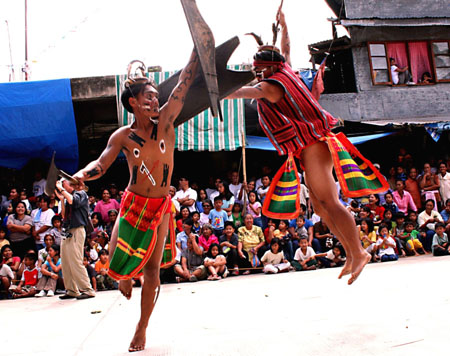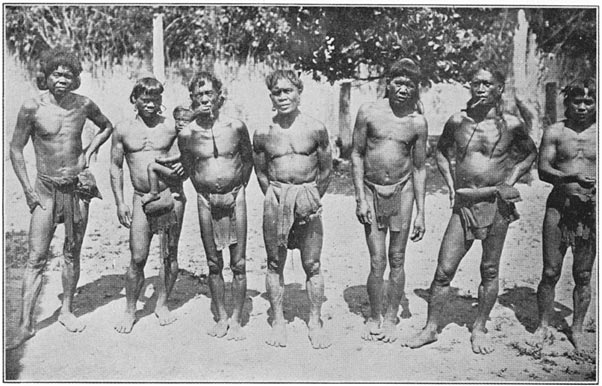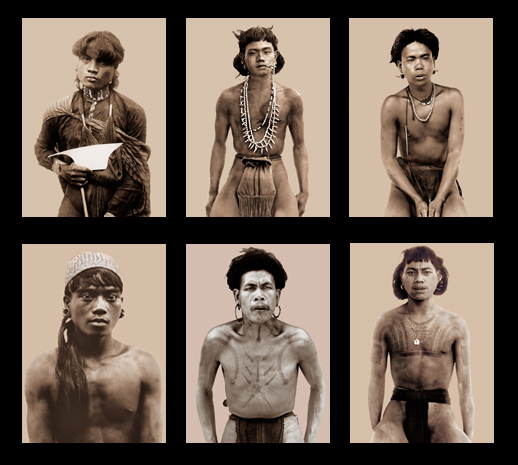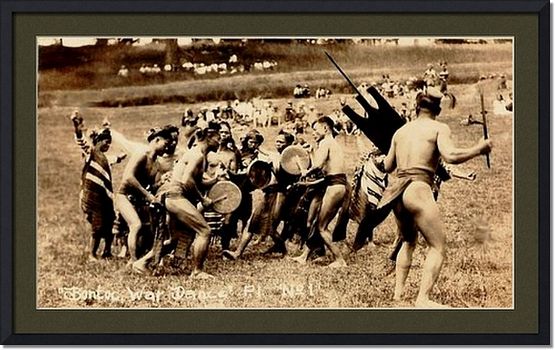This news article infuriated me. Why would anyone try to restrict a perfectly harmless tradition?
The tourism department has called on Cordillerans to tone down the presentation of war dances to avoid imparting the wrong impression that some tribes still practice tribal wars giving the impression that the region is not a safe place to visit, thus affecting the growth of the local tourism industry.
Several local officials have already informed tourism stakeholders that the showcasing of war dances will not be good for the tourism industry because tourists may have a wrong impression that because of such tribal dance, the places are not peaceful and are no longer safe to visit. Because of such concern, the regional office of the Department of Tourism (DoT) advised cultural groups to refrain from performing war dances, especially in front of visitors. Tourism officials said Cordillera-inspired dances must depict that Igorots are peace-loving people and that the places comprising the region are peaceful and are potential tourist destinations because of their distinct scenic spots worthy of visiting. (Read the rest of the article here.)

For those not very familiar with the Philippines, the Cordillerans are “a group of indigenous people, recognised as such by Republic law, with their own sets of customary laws.” The Cordillera Region is located in Northern Luzon and is said to be the only land-locked region in the Philippines.

They are made up of 7 ethno-linguistic groups Abra (Tinggian), Apayao (Isneg), Benguet (Kankanaey and Ibaloi), Ifugao (Ifugao), Kalinga (Kalinga, Isneg), Mountain Province (Kankanaey). They have resisted invasion by the Spanish, Japanese, Americans and even people from the lowlands.
Spanish deeds were never issued for the land in the Cordilleras since the Spanish were continuously repelled for the whole of Spanish colonial period.Cordillerans view land as the source of life, an integral part of their cultural identity, that traces its origins from the land. Land is considered sacred and tribal land can neither be owned nor sold, but it nurtured to produce life for the communal benefit. For Cordillerans, the loss of their land, or their alienation from it, can be equivalent to taking their lives. It is because of this belief that Cordillerans now and in the past have willingly shed blood to defend their domain from colonisers, and have fought for the right to remain on their land. (source)
There has always been an impression that Filipinos were illiterate prior to the arrival of the Spanish. That we didn’t have our own culture is a big misconception and needs to be corrected. The fact that the Cordillerans were not conquered by colonizers is reason enough to preserve, and more important, to PROTECT the culture of the highlands.
Now, the dance in question is called Idaw, a ritual performed by warriors right before going to war. It depicts the grace and movements of the Idaw, a sacred bird which the Cordillerans (particularly those from Bontoc) believe will lead the warriors to victory. I have seen a live performance of the Idaw but never had the impression that there is danger lurking in the Cordilleras nor have I ever felt threatened. See for yourself here:
Other cultures have their own war dances. Take for instance the Haka of the Maoris of New Zealand:
This traditional dance is even honored by New Zealand rugby teams like the All Blacks who perform the Haka right before a match.
Maybe the DOT can learn a thing or two from the Kiwis:
The Cordillerans have their own rich and unique culture that all Filipinos should be proud of. It is a shame that the government is making these cultural restrictions all in the name of trade.




This is upsetting. Really, we’re going to adjust a part of our culture to accommodate the possibility of more tourists. Ang galeng. Tsk tsk.
Mabes, It’s ridiculous! I wonder how the NCCA reacted to this news…
The tourists are not stupid. They know it’s a performance of a traditional dance. Were they getting complaints??
Hi Grace! No, I don’t think so. It just boggles the mind!
I think the ones who are qualified to debate this are the Igorots themselves. Non-Igorots should at least tone down on assuming they know what is best for Igorots. Let the Igorots debate this for themselves, they are not “children” to be told what to do by non-Igorots
Also, please read this thesis about the “bahag sydrome”
http://www.academia.edu/6347017/Locating_Their_Penis_Pilipino_American_College_Male_Performativity_Sexuality_and_the_Bahag_Syndrome_
Also, the ethnic groups are close to 20 rather than 7. There also also the Butbuts, the Applais, the Ifontoks, and Ikhalans….
Idaw is actually I-Kalinga, not Ifontok
The bigger problem here is actually how the non-Igorots make their own interpretation of Igorot war dances….it seems to always include grunting.
Please read the thesis I posted. This is not my thesis but it puts a lot into perspective
Hi Janice! Thanks so much for the info! And thanks for the link. Looks very interesting. I will read the thesis when I have the time.:) I hope soon!
Happy travels!